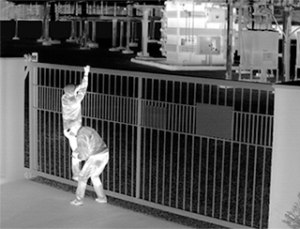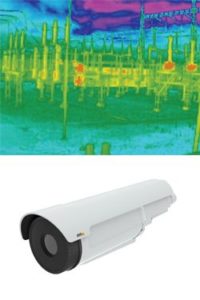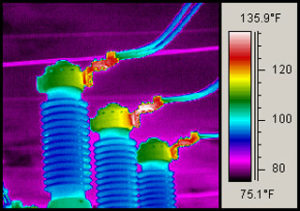During the 1950s, while the Korean War was in full force, an ingenious invention surfaced. In order to improve night vision, the first IR (thermal) camera was invented. Soldiers were no longer forced to crawl through dark woods with zero visibility, but instead the thermal cameras allowed them to see any heat sources present. Since that time thermal cameras have grown, diversified, and increased in applications.
HOW DO THERMAL CAMERAS WORK
Typical surveillance cameras produce an image from visible light. Thermal cameras however utilize infrared radiation to create the image. This is a picture that is typically a myriad of different colors in order to differentiate between temperatures present.
THERMAL APPLICATIONS FOR ELECTRICAL SUBSTATIONS
There are countless applications for thermal cameras and heat mapping. Over the years, it has been the mining industry that has used this technology in order to better see thru the large amounts of dust created underground. They can regulate how hot their machines are getting, where people are, and then make decisions accordingly. Mining has benefited for years by using thermal cameras but what about electrical substations? Can they benefit?
- High Risk Compounds

- Substations should be highly protected areas that are secure from unauthorized personnel. Utilizing thermal cameras in order to securely protect perimeters from trespassers would be a huge benefit to electric companies. Guards or managers viewing a thermal surveillance camera would have no trouble noticing a perpetrator attempting to climb a fence, or any personnel in a highly restricted zone. The white glowing nature of any item generating a large amount of heat makes them easy to spot in the darkness of night due to the stark contrast.
- Aging Equipment

- Substations are also beginning to be faced with the realization that their facilities are not as new as they once were. Aging equipment increases the probability of equipment going bad and blackouts ensuing. Many substations are investing in thermal cameras not only for security reasons but to monitor the heat of transformers as well. This thermal image below shows the different temperatures surrounding the transformers. Monitoring the various colors and color changes lets employees know when it is time to address an issue at a particular location before it causes a bigger issue.
- Money Saving
- Substations are finding that having the ability to address problem areas before they cause extensive issues is saving them countless dollars. Thermal cameras are catching issues before they result in blackouts, brownouts and in the long run, saving money on maintenance and repair work.

Keep in mind that the applications for thermal cameras and heat mapping are endless. Take the time to think outside the box and consider all the possibilities for your specific location.
Have more questions about heat mapping and thermal cameras? Our Southern Illinois security experts would be happy to help. Give us a call or contact us online for more information.

